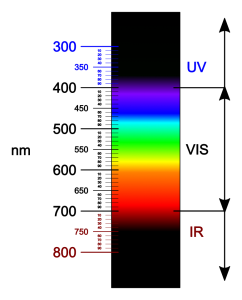By Yogitha Chareddy
Spring is in full bloom and the warming weather is encouraging North Carolinians to leave their cozy homes in search of fun outdoor activities. As we shed our winter jackets, sweaters, and fuzzy socks, we must remember to add a new layer of protection: sunscreen.
Everyone knows what sunscreen is. It’s the pasty white liquid you put on your exposed skin to prevent leaving the beach with reddened shoulders, peeling skin, and bad memories. Almost everyone hates sunscreen. It smells bad, feels weird and gives your skin a strange color. But sunscreen is probably one of the most important additions to your daily routine, especially as you spend more time in the sunlight when spring turns to summer.
 Sunscreen is a class of products containing filters that absorb or reflect ultraviolet (UV) light from the sun. You are exposed to UV light every single time you go into the sun; technically, you should be wearing sunscreen every day!
Sunscreen is a class of products containing filters that absorb or reflect ultraviolet (UV) light from the sun. You are exposed to UV light every single time you go into the sun; technically, you should be wearing sunscreen every day!
Light is made up of waves at consistent sizes, which can be measured as wavelengths. In comparison to visible light, UV light has shorter wavelengths (so the human eye filters it and we can’t see it) and can be separated into two main categories, UVA and UVB, based on wavelength. UVA radiation (between 320 and 400 nm) penetrates the deeper layers of your skin and is typically what causes skin darkening, and UVB radiation (between 290 to 320 nm) exposure leads to sunburns. While you may prefer one over the other as you work on your perfect summer tan, both of them are actually greatly damaging your skin. UV light can penetrate deep into your cells and create chemical changes in your DNA, leading to mutations and potentially skin cancer. Additionally, it can lead to photoaging, or premature wrinkles and pigmentation caused by repeated exposure to light.
 If you are biting your nails with worry because you think you’re going to get cancer after you went for a walk once without wearing sunscreen, don’t fret. Your body has a natural mechanism that activates when exposed to UV light: tanning! Melanocytes in your skin tissue are stimulated to produce more melanin when hit with UV light, and melanin (which is what deepens your skin tone) can protect your cells from DNA damage by absorbing 50-75% of the light that reaches it. However, having more melanin in your skin does not necessarily mean you are fully protected from the sun’s harmful rays. Only sunscreen, which contains ingredients that can form a physical barrier that reflect UV light entirely or that absorb and redirect the energy from light as heat, can provide the ultimate protection you need.
If you are biting your nails with worry because you think you’re going to get cancer after you went for a walk once without wearing sunscreen, don’t fret. Your body has a natural mechanism that activates when exposed to UV light: tanning! Melanocytes in your skin tissue are stimulated to produce more melanin when hit with UV light, and melanin (which is what deepens your skin tone) can protect your cells from DNA damage by absorbing 50-75% of the light that reaches it. However, having more melanin in your skin does not necessarily mean you are fully protected from the sun’s harmful rays. Only sunscreen, which contains ingredients that can form a physical barrier that reflect UV light entirely or that absorb and redirect the energy from light as heat, can provide the ultimate protection you need.
The efficacy of sunscreen is written as a Sun Protection Factor (SPF) value, which is a measurement of the amount of UVB radiation it takes to cause a sunburn. During the summer with sun exposure at its highest, doctors recommend wearing sunscreen with an SPF of 15 or higher every day and reapplying every two hours, with more reapplication needed if you are running or swimming.
As you head outdoors or on vacation after the quarantine, you may forget your sunglasses or your camera. But there is one thing you should never forget: your armor for your skin, sunscreen!
Edited by Priya Stepp and Alan Curtis

